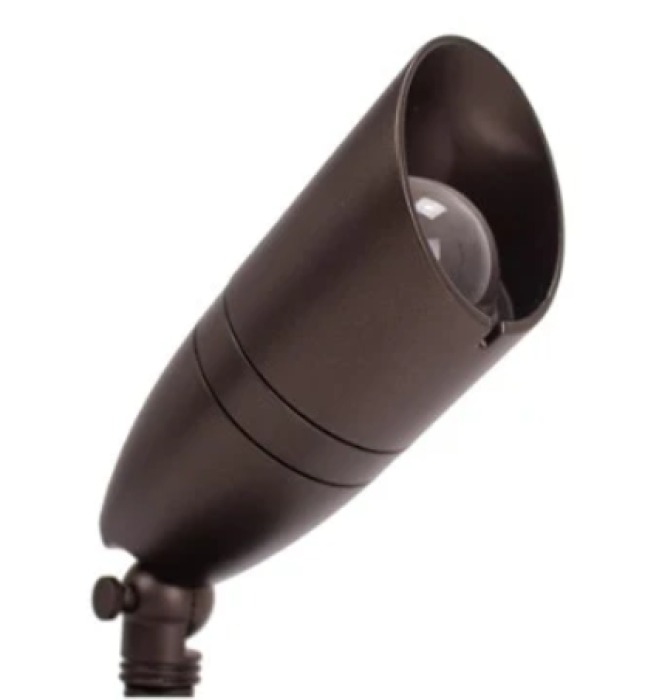LED spot lighting has emerged as one of the most adaptable
tools in modern lighting design, capable of shaping ambiance while delivering
targeted illumination. Unlike general lighting that floods an entire area with
uniform brightness, spot lighting allows homeowners, designers, and business
owners to direct attention where it matters most. This precision makes it
invaluable for highlighting architectural details, showcasing products, or
creating dramatic focal points in both indoor and outdoor settings. As
energy-efficient technology advances, LED spots have grown more powerful,
compact, and customizable, opening up endless creative applications.
The technology behind LED spot lights offers several benefits
that directly enhance their versatility. LEDs are known for their directional
light output, meaning that most of the energy they produce is channeled in the
intended direction without significant loss. This makes them highly efficient
for tasks that require sharp focus, such as illuminating a piece of art or
spotlighting a building façade. Combined with adjustable beam spreads, they can
create anything from a narrow pinpoint of light to a wide wash effect, giving
users complete control over mood and function.
LED spot lighting also integrates seamlessly into a variety
of spaces and design schemes. Their compact nature allows them to be recessed,
surface-mounted, or incorporated into track lighting systems without visual
clutter. This adaptability has made them a preferred choice for both
residential and commercial environments, from chic retail showrooms to cozy
living rooms. In essence, LED spot lights are more than functional fixtures;
they are a design tool that blends technology, efficiency, and artistry.
Choosing the
Right Location for LED Spot Lighting
Selecting the ideal location for LED spot lighting requires
careful thought about both form and function. Indoors, these lights excel when
used to accentuate specific design elements such as textured walls, decorative
ceilings, or artwork. Placing them at the correct angle can prevent glare while
ensuring that the subject is evenly lit. For instance, aiming a spotlight at a
painting from a 30-degree angle typically reduces unwanted shadows and
reflections while preserving the vibrancy of the colors.
In outdoor spaces, LED spot lights are frequently used to
highlight landscaping features, architectural elements, and pathways. The
strategic positioning of these lights can transform an otherwise unremarkable
yard into a visually striking space after dark. By aiming spotlights at trees,
sculptures, or building façades, homeowners can create layers of depth and
interest that make the property more inviting. This also enhances nighttime
safety by illuminating potential hazards without over-lighting the surrounding
areas.
Homeowners seeking to upgrade their lighting often turn to
trusted sources like Buy Rite Electric for quality and variety. Among their carefully
curated selections are LED spot lights and other versatile choices in focused
lighting solutions available in multiple finishes and beam patterns. Their
reputation for service and product reliability ensures lasting satisfaction,
while their commitment to innovation keeps their offerings aligned with the
latest lighting trends.
Maximizing Curb
Appeal with Outdoor Spot Lighting
One of the most impactful uses of LED spot lighting is in
enhancing the exterior appearance of a property. Well-placed lights can
accentuate architectural features such as columns, archways, and rooflines,
drawing the eye upward and giving the structure greater visual presence. This
form of lighting can also highlight materials like stone, brick, or wood,
allowing their textures to stand out beautifully against the night sky. For
historic homes or buildings with intricate detailing, spot lighting can restore
the prominence of craftsmanship that might otherwise go unnoticed.
In landscape design, LED spot lights can turn plants, trees,
and water features into nighttime focal points. Uplighting tall trees creates
dramatic silhouettes, while washing light across a garden bed can emphasize its
shape and depth. Lighting water features such as fountains or ponds adds
movement and shimmer, creating an atmosphere that feels both luxurious and
tranquil. The interplay between light and shadow can be used to craft spaces
that invite exploration while maintaining a sense of intimacy.
Outdoor spot lighting is also a strategic tool for improving
the market value of a property. Potential buyers often respond positively to
homes with thoughtfully designed exterior lighting, associating it with
security, elegance, and attention to detail. Moreover, the energy efficiency
and longevity of LED technology mean that these aesthetic benefits come without
significant increases in operating costs. This combination of beauty and
practicality makes spot lighting an appealing choice for long-term investment.
Enhancing
Indoor Ambiance with Spot Lighting
Inside the home, LED spot lighting can serve both functional
and decorative purposes. In living rooms, these lights can draw attention to
artwork, shelving displays, or statement furniture, creating points of visual
interest without overpowering the space. Adjustable fixtures provide
flexibility, allowing homeowners to adapt lighting schemes for different
occasions, from casual gatherings to formal entertaining. With the right
design, spot lighting can also be layered with other light sources to create a
balanced and dynamic atmosphere.
In kitchens and dining areas, spot lighting plays an
important role in task illumination. Directed light above a kitchen island or
over a dining table ensures that activities like cooking and dining are
well-lit without being harsh. By selecting warm color temperatures, it is
possible to foster a welcoming environment while still maintaining the clarity
needed for detailed tasks. Dimmers add further versatility, enabling homeowners
to adjust brightness to suit the time of day or mood.
Bedrooms and home offices also benefit from the precision of
spot lighting. In bedrooms, a carefully aimed spotlight can highlight a
textured headboard or a feature wall, contributing to a sense of luxury. In
home offices, spot lighting can focus on work surfaces or bookcases, improving
visibility without flooding the entire room with bright light. This selective
illumination helps create spaces that feel both purposeful and comfortable.
Creating
Dramatic Effects in Commercial Spaces
In retail and hospitality environments, LED spot lighting is
a proven method for influencing customer perception and behavior. Retailers
often use spot lights to make products stand out, guiding customers’ eyes
toward featured displays or promotional items. The concentrated light can make
colors appear more vibrant and details more noticeable, encouraging closer
inspection and engagement. This targeted approach often results in higher sales
and stronger brand presentation.
Restaurants, hotels, and event venues also use spot lighting
to enhance ambiance and define spatial zones. In a dining room, for example,
soft spot lighting can create intimate areas for small groups, while brighter
lights highlight the bar or stage. This control over light intensity allows
operators to adapt spaces for different events or times of day, maintaining
both practicality and mood. In hotels, spot lighting is often used to emphasize
art installations or architectural details in lobbies and hallways,
contributing to an upscale guest experience.
Corporate offices and galleries take advantage of spot
lighting for presentation and display purposes. In offices, lighting can be
directed toward signage, awards, or branded elements to reinforce identity. In
galleries, spotlights are essential for drawing focus to specific pieces,
allowing visitors to appreciate texture, color, and craftsmanship in greater
detail. The adaptability of LED spot lighting makes it well-suited for spaces
that require a balance of utility and style.
Technical
Considerations for Optimal Performance
While the creative potential of LED spot lighting is vast,
achieving maximum impact requires attention to technical details. Beam angle is
a critical factor, as it determines the spread of light and the size of the
illuminated area. Narrow beams produce intense, focused light that is ideal for
highlighting small objects or creating dramatic effects, while wider beams are
better for washing light across larger surfaces. Matching beam angles to
specific applications ensures consistent and intentional results.
Color temperature is another important consideration. Warmer
tones (2700K to 3000K) create a cozy, inviting feel, while cooler tones (4000K
and above) convey a crisp, modern look. The right choice depends on the setting
and desired ambiance. In residential spaces, warmer tones often work best for
living areas, while cooler tones can be effective in workspaces or areas that
benefit from heightened visual clarity.
Durability and weather resistance should be top priorities
for outdoor installations. Look for fixtures with appropriate IP ratings to
guard against water and dust intrusion. In coastal regions, corrosion-resistant
materials are essential for long-term performance. For indoor use, consider
whether the fixture offers adjustable aiming and whether it is compatible with
dimming systems. These technical factors not only influence the appearance of
the lighting but also its lifespan and maintenance requirements.
Integrating
Spot Lighting into Broader Lighting Plans
For maximum effect, LED spot lighting should be integrated
into a broader, layered lighting plan. Combining spotlights with ambient and
task lighting creates depth and flexibility, allowing spaces to adapt to
different needs and moods. In a living room, for instance, overhead lighting
can provide general illumination, while spotlights add accent lighting to
highlight art or architectural features. This layering helps prevent flat,
uniform lighting that can make spaces feel lifeless.
Coordination between lighting types also enhances energy
efficiency. By relying on spot lighting for specific tasks or highlights,
homeowners and businesses can reduce the need for high-output general lighting.
This targeted approach minimizes energy consumption without compromising
visibility or aesthetics. With the widespread availability of LED technology,
it is possible to achieve these benefits while keeping long-term operational
costs low.
Professional lighting designers often use spot lighting as a
tool for storytelling within a space. By guiding the eye through a series of
illuminated focal points, they create a sense of movement and intentionality.
Whether in a home, retail store, or public venue, this approach helps shape the
way people experience and remember a space. Integrating spot lighting
thoughtfully ensures that its impact is both immediate and lasting.









